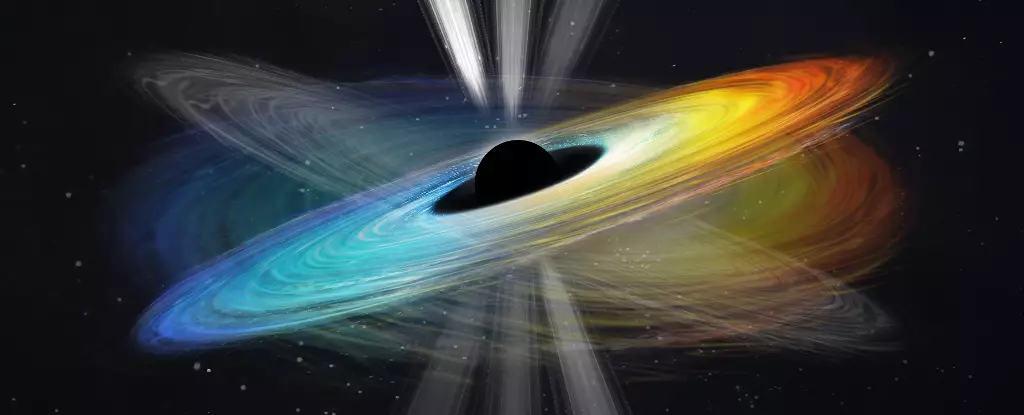When the first-ever image of a black hole was released in 2019, it captivated the world. However, this supermassive monster known as Messier 87 (M87) still held more secrets. After analyzing 22 years of observations, scientists have now confirmed that the black hole at the core of M87 is indeed spinning. This groundbreaking discovery sheds light on the nature of these mysterious cosmic entities.
Utilizing a network of more than 20 telescopes across the globe, researchers meticulously examined 170 observations of M87 between 2000 and 2022. While they couldn’t directly observe anything inside the black hole’s event horizon, they were able to track its enormous jet. This jet spans an astonishing distance of 4,900 light years, appearing to move at nearly five times the speed of light due to an optical illusion known as superluminal motion.
The Origin of Jets
The presence of these powerful jets has puzzled scientists for decades. The prevailing theory suggests that radiation and particles are channeled along the black hole’s magnetic field lines, creating these magnificent displays. However, the exact mechanism behind their formation remains elusive.
By carefully analyzing the data, researchers observed that the black hole at the center of M87 consistently changed the angle of its jet by approximately 10 degrees before returning to its original position. This cycle took approximately 11 years to complete. From this intriguing observation, the scientists deduced the existence of a spinning black hole. The rotation of black holes causes a phenomenon known as frame-dragging, which warps the space-time around them. This effect leads to the tilting of the accretion disk and the jet.
M87 holds special significance for astronomers due to its relatively close proximity, being only 54 million light-years away. This closeness allows researchers to obtain higher resolution data than with more distant galaxies, providing a unique opportunity for detailed analysis.
First observed by Charles Messier in 1781, M87 has fascinated astronomers for centuries. The galaxy is named after Messier, bearing the designation Messier 87 or M87. Its proximity and the compelling phenomena occurring within it have made it a subject of great interest for scientists.
Most black holes are believed to rotate at nearly the speed of light. The discovery of M87’s spinning black hole adds another confirmation to this hypothesis. In 2013, the black hole at the center of the NGC 1365 galaxy, located around 60 million light-years away, was found to rotate at 84 percent of the speed of light. Similarly, in 2019, scientists inferred the rotation of another black hole at 50 percent of the speed of light using X-ray pulse patterns.
The rapid rotation of black holes can be attributed to the conservation of angular momentum. When matter collapses into a singularity, such as in the formation of a black hole, it becomes incredibly dense, occupying very little volume. However, its angular momentum is conserved. If the matter originated from a spinning star, its rotational speed would increase when compressed, similar to how an ice-skater spins faster by pulling in their arms.
Through meticulous observations and data analysis, scientists have unlocked another mystery surrounding black holes. The confirmation of M87’s spinning black hole provides further evidence for the prevalent notion that these cosmic entities rotate at incredibly high speeds. As our understanding of black holes deepens, this discovery paves the way for new insights into the fundamental nature of the universe.


Leave a Reply